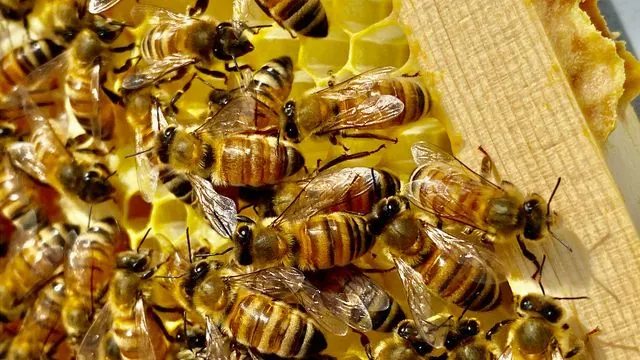
Unlocking the Secrets of Honey Bee Behavior: How the Doublesex Gene Shapes a Superorganism
2024-11-04
Author: Arjun
Introduction
Researchers from Heinrich Heine University Düsseldorf (HHU), alongside collaborators from Frankfurt/Main, Oxford, and Würzburg, have embarked on an inspiring journey to unveil the genetic programming behind the remarkable cooperative behavior of honey bees (Apis mellifera). Their findings, detailed in the acclaimed journal Science Advances, reveal that a specific gene known as the doublesex gene (dsx) plays a crucial role in determining the behavior of worker bees.
Social Behavior in Honey Bees
In the animal kingdom, social behavior is not merely a learned trait but rather a fundamental element of species survival, providing distinct advantages in tasks like collective foraging, predator defense, and offspring nurturing. Honey bees, in particular, exemplify this concept, operating as a cohesive unit or 'superorganism' where each worker bee carries out tasks that benefit the entire colony. This intricate social structure relies on behaviors that are inherited rather than acquired through experience.
The Role of the Dsx Gene
Led by Professor Dr. Martin Beye from HHU's Institute of Evolutionary Genetics, the research team sought to uncover this genetic mystery. 'Until now, we didn’t fully understand how such complex behaviors were encoded genetically,' Beye stated. The study showcases the essential role of the dsx gene, which determines how worker bees engage in various tasks, such as caring for larvae and foraging for food, as well as how they communicate the locations of food sources within the hive.
Research Methodology
To investigate the influence of the dsx gene, the researchers employed innovative CRISPR/Cas9 technology to modify the gene in specific bees. By tagging these genetically altered bees with QR codes, the team monitored their activities in the hive through video analysis supported by artificial intelligence, aiming to dissect their unique behavioral patterns.
Observations and Findings
Dr. Vivien Sommer, the first author of the study, noted, 'Our central query was whether changes in inherited behavioral patterns could be traced back to genetic modification, and if so, how those changes manifest in the bees’ nervous systems.'
Neural Implications of Genetic Modification
To visually track the effects of the genetic modifications, the scientists introduced a green fluorescent protein (GFP) into the dsx gene sequence. This allowed them to observe how the dsx gene establishes neural pathways in both modified and unmodified bees using fluorescence microscopy. According to doctoral researcher Jana Seiler, this research elucidates the neural circuits created by the dsx gene, directly linking them to the behavior patterns observed in honey bees.
Broader Implications of the Research
Professor Dr. Wolfgang Rössler from the University of Würzburg affirmed, 'Our research reveals a fundamental genetic program that governs the neuronal circuitry and behavior of worker bees.' This crucial discovery opens doors to further understanding the genetic-behavioral relationship in the context of a bee colony functioning as a superorganism.
Future Directions
Looking ahead, the researchers aim to transition their focus from studying individual bees to examining cooperative behaviors within the hive's collective superorganism. Alina Sturm, another co-author from HHU, expressed hope that their ongoing research might bridge the gap between individual genetic programming and the coordinated behaviors of bees working together.
Conclusion
As science continues to unlock the secrets of honey bee behavior, the implications for understanding social species—and the evolutionary benefits of inherited behavior—could alter our perspective on complex social systems in the animal kingdom. Stay tuned, as more groundbreaking revelations are yet to come!


 Brasil (PT)
Brasil (PT)
 Canada (EN)
Canada (EN)
 Chile (ES)
Chile (ES)
 España (ES)
España (ES)
 France (FR)
France (FR)
 Hong Kong (EN)
Hong Kong (EN)
 Italia (IT)
Italia (IT)
 日本 (JA)
日本 (JA)
 Magyarország (HU)
Magyarország (HU)
 Norge (NO)
Norge (NO)
 Polska (PL)
Polska (PL)
 Schweiz (DE)
Schweiz (DE)
 Singapore (EN)
Singapore (EN)
 Sverige (SV)
Sverige (SV)
 Suomi (FI)
Suomi (FI)
 Türkiye (TR)
Türkiye (TR)